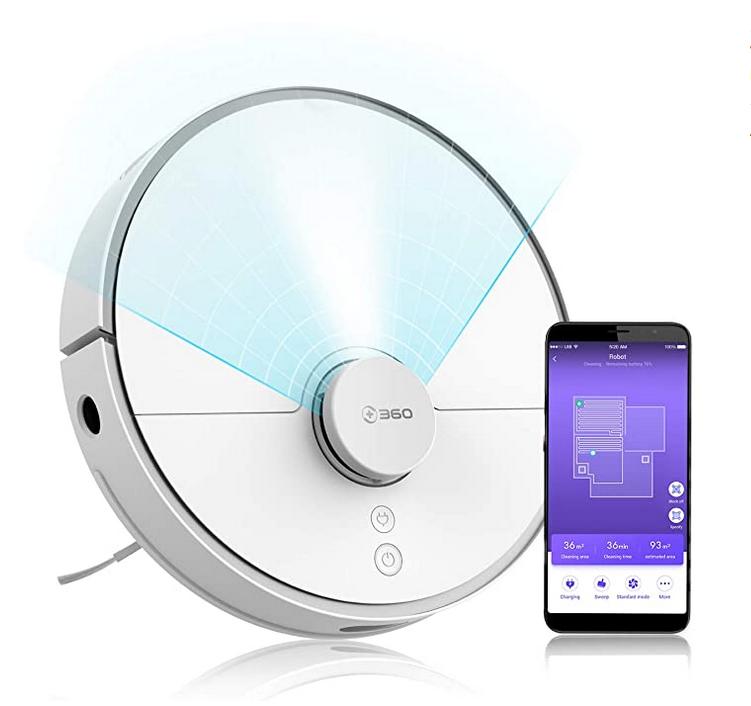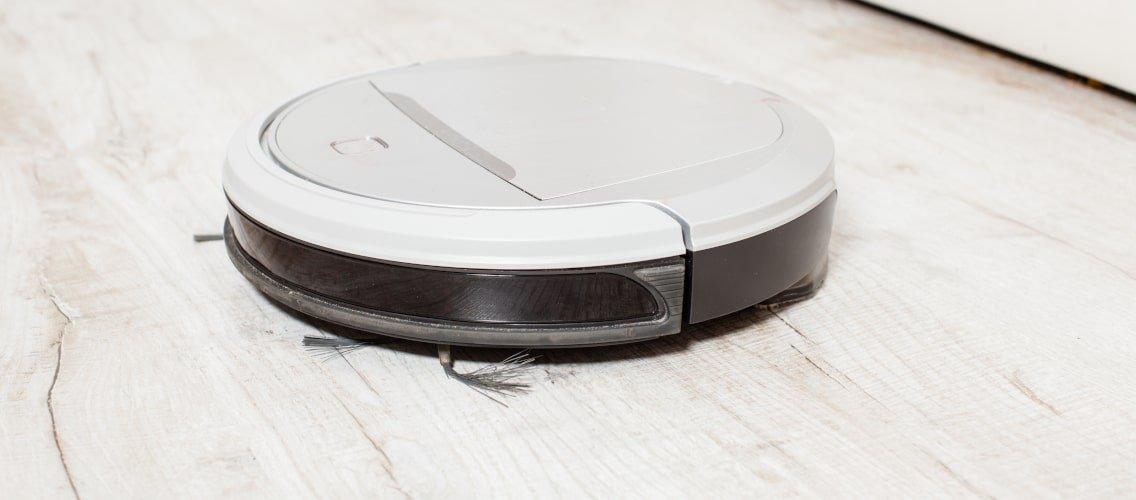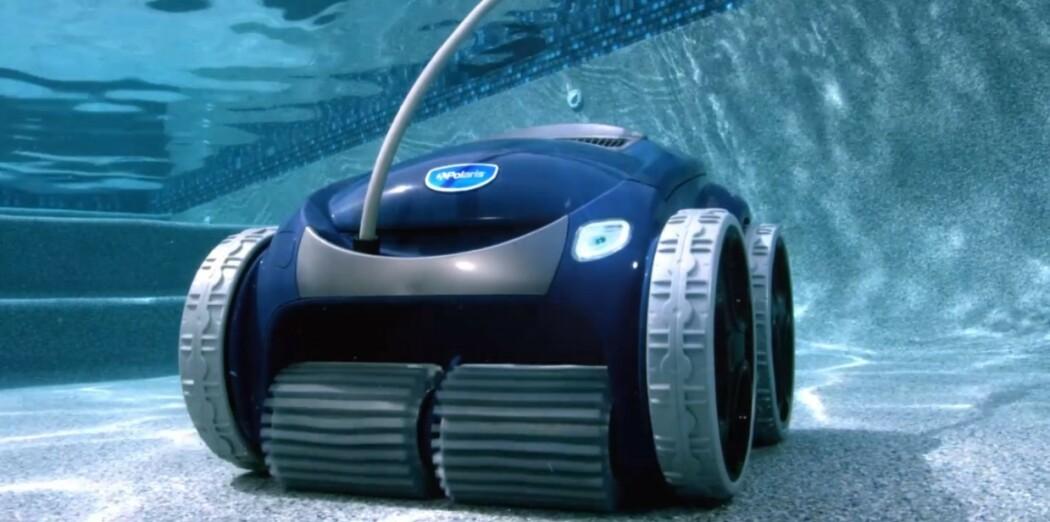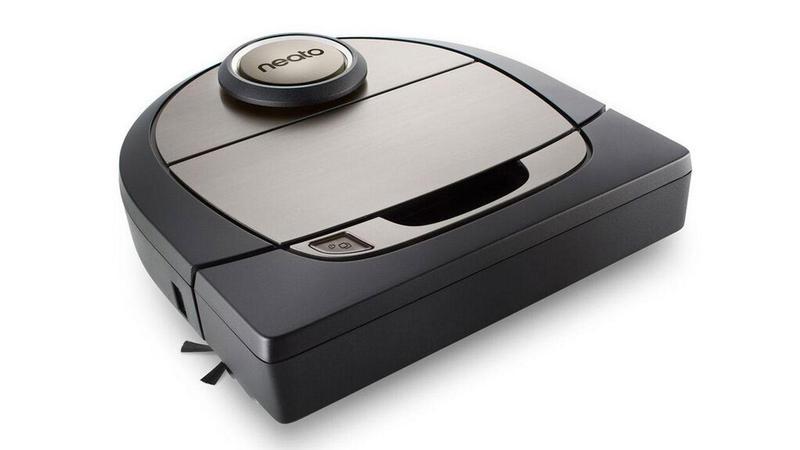Robot vacuums and mops – is the effort you save worth it?
GadgetGuy has reviewed many robot vacuums and mops over the years. It is fair to say that technically, none have met our expectations. Perhaps those expectations are too high.
This is GadgetGuys definitive guide to robot vacuums and mops and gives you an insight into how we review them. Since we first saw the iRobot Scooba robomop (7.4/10) in 2008 and Samsung’s first Navibot (robot vacuum with camera navigation) in 2012, it has been a case of robot vacuums and mops are expensive; they mostly do the job on hard floors; navigation is patchy; and the amount of preparation needed to let it do the job is often more than it is worth.
Then we saw circa 2014 Dyson’s 360 Eye robot vacuum, that in true Sir James Dyson style claimed, “Most robotic vacuum cleaners don’t see their environment, have little suction, and don’t clean properly. They are gimmicks.” It was a product of 16 person-years R&D borrowing from 21-years of vacuum technology. It used a 360° camera to see. To be fair was the ‘best-damned sucker’ at the time. But navigation was poor, technology was not ready, and ultimately it was an expensive flop that Dyson has not repeated since.
Since then, we have seen a parade of Robbie the robots scoring 8/10 (our bare pass mark) or less. But recently, the LG R9 scored 9.2, Roomba i7 9.3, Neato D7 9.1 and Dreame L10 Pro 9.3. What changed?
Navigation tech caught up with the promise
LiDAR (Light Detection and Ranging radar) and SLAM (Simultaneous localisation and mapping), along with advances in the A1 cloud, began to address the robot vacuums and mops pain points. That is the ability to trust Robbie to do its job without a lot of preparation and leave it to clean unattended.
As of this guide (June 2021), the Dreame Bot L10 Pro is the only one you can trust, courtesy of dual LiDAR that builds a 3D map (versus a single LiDAR that builds a 2D map). It is not technically perfect, but it heralds the new era of AI Robots with object detection and 3D mapping.
Not that I wanted this guide to start negatively, but these have largely been our technical findings. What about that “Je ne sais quoi” (I know not what)? Well, my sister-in-law has had an Aldi special ‘cheapie’ dumbot for at least five years and loves it. Her floors are hardwood, and she is happy to see it bump around the kid-and-dog-proof furniture. I guess it’s the old “Price is what you pay. Value is what you get.”
Note that we use the term detritus to describe the pick-up of dust and smaller particles from the floor.
Grey/parallel market warning
We issue the standard warning about grey market, parallel imports, and the risk of shopping with international merchants that frequent Kogan.com. Dick Smith, Matt Blatt (all Kogan fronts), Amazon, eBay and Chinese shopping sites like Alibaba (there are thousands). In many cases, you will not get an Australian Consumer Law Warranty nor readily available maintenance consumables.
Why buy a robot vacuum or robot mop?
Because you hate vacuuming or mopping! You need to know that a robovac or robomop only does a light ‘maintenance’ clean or mop. A proper vacuum or whole-of-home capable stick vac (Dyson V-series or LG A9-series) will usually pick up twice as much detritus as a robovac.
A robovac generally does not do edges and under cupboard overhangs. It does not do stairs, and its efficiency on standard and longer pile carpet can be below 50%.
In short, channelling Sir James Dyson, robot vacuums and mops were a gimmick but are getting smarter and better.
House prep
The nirvana is that a robovac can be left to clean any area in any ‘state’. Nirvana does not exist. You cannot expect any robot cleaner to work unaided! As a guide
We are relatively confident that you can set most of those tested to go after the above preparation.
The answer to house prep is the new dual LiDAR models where it is safe just to let it go. Although even these have blind spots like hanging cables and long shoelaces.
Types
There are basically two robot vacuum formats – Round or D-shape, both with avoidance bumpers.
Some round models have dual brushes that spin against each other. We have found no significant difference in efficiency.
Logic (and practice) says the D-Shape is twice as fast as a round one because it picks more up in the same run. The D-shape is also better for edge, and corner clean, provided it can fit under the cupboard overhangs. Our pick here is the Neato D7 which has the fastest clean time, single LiDAR married with excellent software and mapping, and the most efficient detritus pickup. But at $1299, it should be. Its competitors in this space are LG R9 and Samsung.
Round is a little better at getting into and out of tight spaces as it can spin on its axis. Anyway, round outnumber D-Shape 100’s to one, so that is most likely what you will buy.
Navigation – LiDAR (or two) is best
In the beginning, robots trod a mechanical U-shaped pre-programmed path. The cheaper ones still do. Place them in the corner of a room and let them bump around. Sorry – you don’t want these.
Next came cameras that took images of your ceiling and surrounds to build and use an elementary map. Cameras are way too slow, and maps are way too inaccurate. Sorry, you don’t want these unless it is in conjunction with LiDAR.
Then the move to single LiDAR (builds a 2D map based horizontal slice of the room). This is 99% of the models today. Most use an AI cloud that allows placement of no-go lines – for example, to leave the shag pile alone or not to mop the carpet. AI is getting smarter, but single LiDAR still requires extensive house prep.
Then you have LiDAR plus forward-or-up-facing cameras to detect obstacles. The $1499 Romba iRobot i7 has this and scored 9.3/10 for its reliability and lowers, but does not eliminate, the need to prep the home.
And this year, The Dreame Bot L10 Pro with dual LiDAR. It has a 360° turret LiDAR to build the 2D map and overlays a front-up-facing LiDAR to turn that into 3D and to detect obstacles as small as 3mm. Apart from that, it has 4000Pa power that is twice as powerful as the rest!
The Map
The accuracy of the map is what really makes it work better. Basic maps allow for no-go zones, and that is about it.
But look for features like:

Cleaning patterns
The majority build a map by running around all the homes edges first, then break the spaces into smaller squares (about 4-5m) and execute a U-shaped back and forward clean within those squares.
Once the map is complete and you have placed the no-go and other zones, the robot will clean in a more orderly manner but generally never beyond 8-10m squares.
Spot cleaning means it will start about 1metre out from the centre of the ‘spot’ and go in ever-decreasing circles.
If you find the pattern is too irregular or inefficient, try making a new map.
Cleaning time
Essentially a fast robot will clean about 1m2 a minute, and batteries tend to last about an hour – so 60m2. More efficient D-Shape may be up to twice as fast – 120m2.
Power levels and noise
The majority of robovacs have around 2000Pa (Pascals) on their highest setting. It ‘as advertised’, but the reality is that battery life ‘as advertised’ uses its lowest settings – a genuine conundrum.
Most have three to four power settings – Quiet might be 500Pa, Automatic (1000Pa), Max (1500Pa) and Max turbo (2000Pa)
You will decibel ratings based on 500Pa – usually around 50dB. But at 2000Pa, they can be 80dB or more.
Base station setup
All will have a charging base station that requires proximity to a 240V power point and at between 500-1000mm clearance all around. If the robot does not return to the base, it gets confused.
We use the same location for all tests at the end of a hallway. Robots back out, get their bearings and start cleaning – or not! We have had to move the base station to the centre of a wall in the main room for several reviews. And if you move the base station, even just a scant few centimetres, most cannot dock.
As mentioned earlier, if you want to use multiple levels, get a base station for each.
Self-emptying combo dust-bin and charging stations
To distinguish one brand or model from lesser robots, we see a plethora of combo charge stations /self-empty dust-bins – a good place for a dump!
These tend to distract you from the real issues – robot vacuum or mop efficiency instead of paying for expensive bags (generally $20 to hold three empties) in the station. And you do need to clean the robot after each use, so you tend to forget with these. Nice but not necessary.
Wi-Fi
Most are single band 24GHz, which is fine because this can read 60m from the home Wi-Fi router. Even if it offers you 5Ghz – don’t use that as it only has a 20m range.
99% of robot issues are due to Wi-Fi dropouts. It is partially because the cheaper robots and routers have a weak Wi-Fi signal strength. We recommend testing this first. Android users can download Network Cell Info Lite to measure the -dBm (lower is better) and Wi-Fi signal strength. If -dBm exceeds -60, your Wi-Fi is not strong enough, and you will need a better router or install a range extender (care, this must seamlessly change over from the router).
Error handling
Not a significant issue, but we test for how easily the robot gets stuck under furniture or beds, in dark rooms etc. The app should have a way to locate the robot if it is stuck.
The majority of robots hate being picked up and can lose their bearings. It is far better to return it to the base, cancel cleaning and start over.
Measure the robot’s height with its turret and add 5mm – that is how much clearance under the furniture you need.
Furniture or floor damage
No robot LiDAR robot has caused damage to the chair, table legs or kickboards. The older type bumped their way around and could scratch things.
As for floor damage, it won’t damage floors unless the motorised brush is in poor shape.
Clean efficiency – hard floor, low pile sisal carpet, shag!
We have mentioned edge clean – most perform very poorly here. The answer is to use a hand or stick vac to do the edges. And remember that you need this to dust, vacuum up cobwebs etc. – a robot is not a substitute for a vacuum.
We use 100g of a mixture of dust fines, rice bubbles and long hair for the test. We weight the detritus collected. Most will have 90% plus on hard floors and as low as 50% on carpets. Again if you compare it to a stick vac, you usually have separate motorised rotating heads for hard floors and carpet.
Stair detection – the leap of death
About 25% have leapt off the stairs, but these are all older, pre LiDAR models. The main thing is to ensure the start detection sensors are clean.
Sills
Almost all will negotiate 20mm sills – few will negotiate 25mm or more. This is most prevalent where hardwood overlay (over an existing floor) or bathroom tiles adjoin carpets etc.
Battery size, charge
Things to look for here is mAh (milliamp hours) or Wh (watt-hours). Most have 2000mAh, but the better ones have double that.
But the cheap robovacs use 200 charge cycle batteries whereas the better ones use 500-100 cycles. That is the difference between a $50 generic battery and a $100-200 genuine one.
Charging time is typically four hours, although the Dreame Bot L10Pro has 5200mAh or 75Wh – nearly twice the capacity of most and capable of up to two hours use. Ergo, it takes longer to charge
Mop style
Robot mops are different. Your hard floor has a specific water tolerance, and too much can seep into the cracks between planks and cause some warping. Always start on the lowest water setting for timber overlays. If a mop uses gravity to feed water, forget it. You need at least three controlled water settings.
Also, mops cannot use anything but water – no detergent, floor polish – nada. This is because the water spray nozzles will become clogged. At present, the only substance approved by some brands is similar to high surfactant micellar water (same as used to remove makeup). But it is costly.
We have yet to see a robomop do anything other than a cursory maintenance mop. Why? The majority drag a static plate with a microfibre or paper one-use pad attached to a water reservoir.
After about 15m2, you start to see streaks due to that dirty pad and must stop and wash it. And edge mopping is abysmal.
Mop efficiency ranges from don’t bother (most) to a maintenance mop. As long as you realise there is no way a static pad mop can clean off dried milk or spilt coffee, we have done our job. The most effective mop to date is a rotating mop head that fits on the LG stick Vac A9.
Some are coming with vibrating plates – we hope to review these soon.
Maintenance
All require a high level of maintenance both after each use and regularly.
Privacy
While robot vacuums or mops should have a low privacy risk, we suggest carefully reading the Privacy Policy and Terms and Conditions you must agree to before using any product.
All collect some personal information when you sign up to enable the company to target its own and third-party advertising to owners.
All robovac collect:
If it asks for more information or more permissions in the app, forget it.
Fit for price or purpose?
Remember my sister-in-law loves her cheapie Aldi? Well, it is a first-generation Ecovacs 600 that randomly navigates – bumps into things. But to her, at under $200, it works on a predominately open space. She has long ago given up on the promise of more because the cheapest 2020 Ecovacs T8 AIVI with LiDAR is about $999. That is what she needs.
GadgetGuy take
Perhaps you should have read this first.
Every time we test a robovac, we run a late model Dyson V-series and/or LG A9 over the same area and pick up 200-400ml of detritus Robbie left behind. It is not just from the edges (which most robots can’t get to) but in particular carpets.
The same goes with robomops. Even after a double pass, we can run a disposable on-use floor pad over the same area, and it is filthy. Mind you; we put elbow grease into a stick mop.
Golden rules on how to choose robot vacuums and mops
robot vacuums and mops, robot vacuums and mops, robot vacuums and mops



